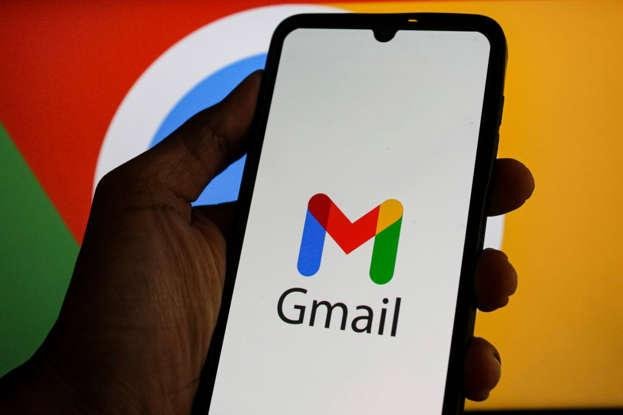Click here to buy secure, speedy, and reliable Web hosting, Cloud hosting, Agency hosting, VPS hosting, Website builder, Business email, Reach email marketing at 20% discount from our Gold Partner Hostinger You can also read 12 Top Reasons to Choose Hostinger’s Best Web Hosting
A huge dataset of about 183 million email credentials surfaced this month, leading to widespread confusion and panic over a possible Gmail passwords data breach. That claim sent alarm through millions of users who wondered whether Google itself had been breached and whether their inboxes, bank accounts or business systems were now at risk. The reality is more complex: security researchers say the dump is a compiled set of stolen credentials from many sources and malware-infected devices, not a direct compromise of Google servers — but that still leaves real dangers for people who reuse passwords or have infected devices. This article explains what the dataset is, why it caused confusion, what Google and independent researchers say, and the practical steps every user and admin should take now.
3 VPNs That Pass All Tests (2025)
- NordVPN: Zero leaks in tests, RAM-only servers, and Threat Protection to block malware.
- Surfshark: Unlimited devices, Camouflage Mode for bypassing VPN blocks, and CleanWeb ad-blocker.
- ExpressVPN: Trusted Server tech (data wiped on reboot) and consistent streaming access.
What happened
Security researchers added a large dataset to the breach-notification landscape: roughly 183 million unique email addresses tied to passwords and related metadata. The data reportedly totals about 3.5 TB and includes stealer logs (data collected by malware from infected machines) and credential-stuffing lists (compilations attackers use to test stolen logins across services). (Troy Hunt)
Major outlets reported that “millions of Gmail passwords” were exposed. Google responded by saying reports that there was a Gmail-targeted breach are false, explaining the dataset is an aggregation of credential theft activity affecting many services and originating from infected devices and prior leaks, not from a breach of Google’s systems. (blog.google)

Why the headlines were misleading
Infostealer databases are aggregated history, not a single new hack.
Infostealers are malware that quietly harvest credentials, then sell or trade those logs. Over time many separate logs are stitched together into massive compilations. That creates a single file that contains credentials from many different events and actors — so a Gmail address appearing in that file does not mean Gmail was breached. (Troy Hunt)Overlap with past breaches inflates perceived novelty.
Troy Hunt’s analysis shows most addresses in the 183M set already appeared in earlier breaches. Only a slice (Hunt reports roughly 8%) were new to his Have I Been Pwned dataset — still millions of addresses, but not evidence of a single Google compromise. (Troy Hunt)Real risk comes from credential reuse and infected endpoints.
Attackers use these large collections to run credential stuffing attacks: they try stolen username/password pairs across email, banking, and shopping sites. If you reuse a password, one leaked instance can let attackers access many services. If a device is infected, new credentials continue to leak.
Gmail Protection: Google Says Claims of a Major Security Warning Are Inaccurate
Why aggregated dumps are more dangerous than single breaches
Most coverage focuses on whether “Gmail was hacked.” That’s the wrong question for most users. Here’s a different, more useful view:
Scale + diversity = better tools for attackers. Aggregated datasets combine old, forgotten, and never-seen credentials. That makes automated attacks—credential stuffing, targeted phishing and account takeover—more effective because attackers can filter and prioritize high-value targets (financial accounts, business emails).
Detection fatigue helps attackers. Large dumps force defenders to triage millions of compromised rows. Security teams and notification services may miss newly included credentials or delay resets, giving attackers a window to act.
Device hygiene is now the frontline. Because much of this data came from stealer malware, protecting endpoints (phones, laptops, home PCs) is as important as changing passwords. In other words: even if a service wasn’t breached, an infected device can leak credentials for months.
This shift in emphasis — from “was the service breached?” to “are my devices and reuse habits creating exposure?” — produces a clearer, more actionable risk model for readers and IT staff.
What researchers found
Dataset size: ~3.5 TB of compiled logs containing ~183 million unique email addresses. (Troy Hunt)
New vs known: Most values had been seen before; about 8% (~14–15 million addresses) were new to Have I Been Pwned at the time of analysis. (Troy Hunt)
Attack vector: The data set is mainly stealer logs and credential stuffing lists rather than a single breach of Google’s infrastructure. (Troy Hunt)
How Hackers Crack Passwords in 1 Second—And What You Can Do to Stay Safe
Practical, step-by-step action plan (for users and small teams)
If you got an alert or are worried your email was listed:
Check Have I Been Pwned (HIBP) or your identity monitoring tool to see if your address appears, and which services are affected. (HIBP maintains searchable records tied to datasets added by researchers.) (Troy Hunt)
Change passwords that are reused. Begin with email, banking, and any sites with saved payment data. Make each password unique.
Enable two-step verification (2SV) or use passkeys. 2SV reduces the chance that a stolen password alone will give attackers access. Passkeys (if available) are stronger and remove passwords from the equation. (blog.google)
Scan for malware on your devices. Use a reputable antimalware tool and run a full system scan. If malware is found, follow vendor guidance to clean the device or restore from a clean backup.
Check account activity. In Gmail, review recent security events and sign-in prompts — revoke access for unknown devices and third-party apps.
Use a password manager. It makes unique passwords manageable and helps spot reused credentials.
For IT teams: block login attempts from suspicious IP ranges, enforce password rotation policies for legacy systems, and monitor for credential stuffing patterns in logs.
Mini case study: how a reused password turned into a takeover
A single small business owner reused the same password across email, a cloud invoicing service, and a payroll portal. The owner’s email and password pair appeared in an infostealer compilation; attackers used those credentials to reset vendor payments via the payroll portal and diverted invoices. Recovery required bank intervention, forensic logs and weeks of remediation. The takeaway: reused passwords + leaked credentials = real financial harm.
Gmail Under Attack: How Hidden Prompts in Gemini Email Summaries Are Fueling a New Phishing Scam
Key Takeaways
This 183M dataset is an aggregated trove of stolen credentials, not evidence that Google’s servers were breached. (Troy Hunt)
Most credentials were previously known; a meaningful minority were new, which still represents millions at risk. (Troy Hunt)
The immediate danger is credential reuse and infected endpoints — protect devices and stop reusing passwords.
Enable two-step verification or passkeys and use a password manager to cut the attack surface. (blog.google)
Organizations should monitor for credential stuffing patterns and enforce stronger sign-in controls.
Google Warning to All Gmail Users: Mandatory Account Upgrades to Prevent Lockout
FAQs (People also ask)
Q: Was Gmail itself hacked in this incident?
A: No — Google says reports of a Gmail-targeted breach are false. The dataset is a compiled set of stolen credentials from many sources and infected devices, not a compromise of Google’s servers. blog.google
Q: How can I check if my Gmail password was included?
A: Use Have I Been Pwned or your identity monitoring service to search your email address. If it appears, treat any matching passwords as compromised and change them immediately. (Troy Hunt)
Q: If my email shows up, do I need to change all passwords?
A: Change passwords for high-value accounts first (email, banking, payroll, cloud storage). If you reuse passwords, change them everywhere. Adopt a password manager to make unique passwords practical.
Q: Are passkeys safe and should I switch?
A: Yes — passkeys remove shared secrets (passwords) from the login flow and are resistant to credential theft. Where supported, they are the stronger option.
Conclusion
The headlines that shouted “Gmail breached” missed the more important issue: large aggregated dumps of stolen credentials are dangerous whether or not a single service was directly hacked. Google’s systems were not breached, per the company’s statement, but the dataset still ramps up the risk for people who reuse passwords or run devices with poor malware protection. Take this as a nudge to check your addresses on breach notification services, enable stronger sign-in protections like passkeys or 2SV, clean any infected devices, and stop password reuse. If you do those things today, you reduce the chance that your account will be the one attackers pick out of the 183 million.
Check your email at Have I Been Pwned, enable two-step verification for Gmail, and consider switching to a password manager and passkeys to better protect your accounts.
Sources: Analysis and dataset details from Troy Hunt / Have I Been Pwned. Google’s official post clarifying the situation and advising users on protections. Troy Hunt
Now loading...






